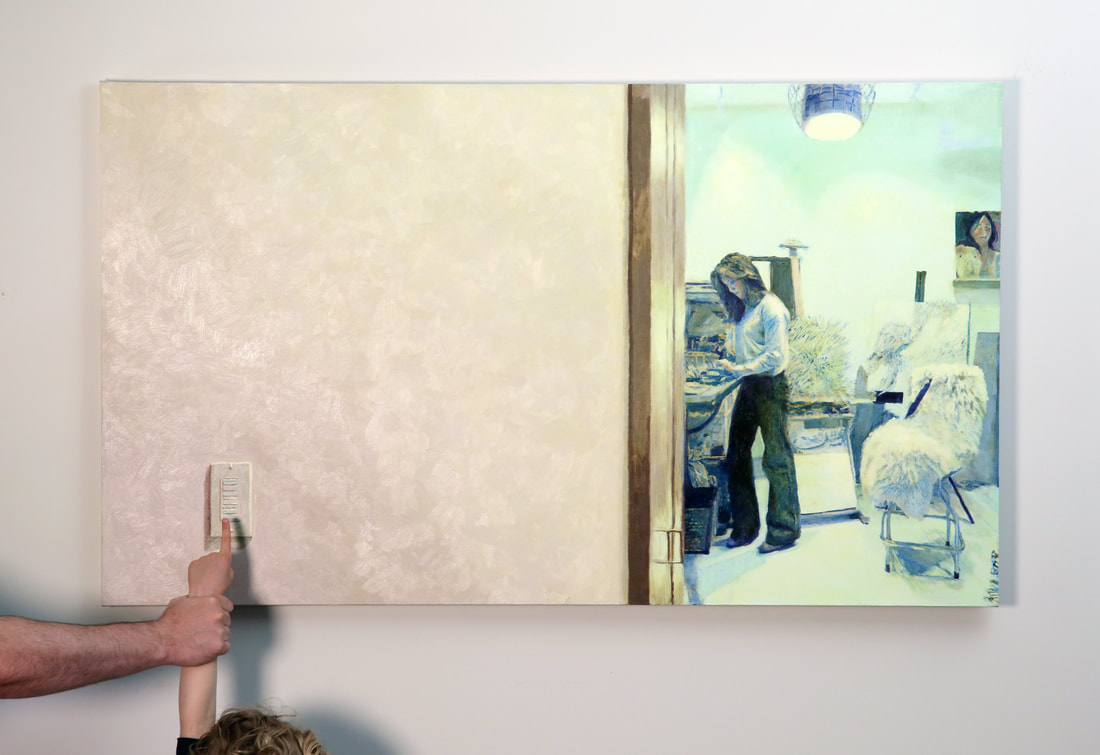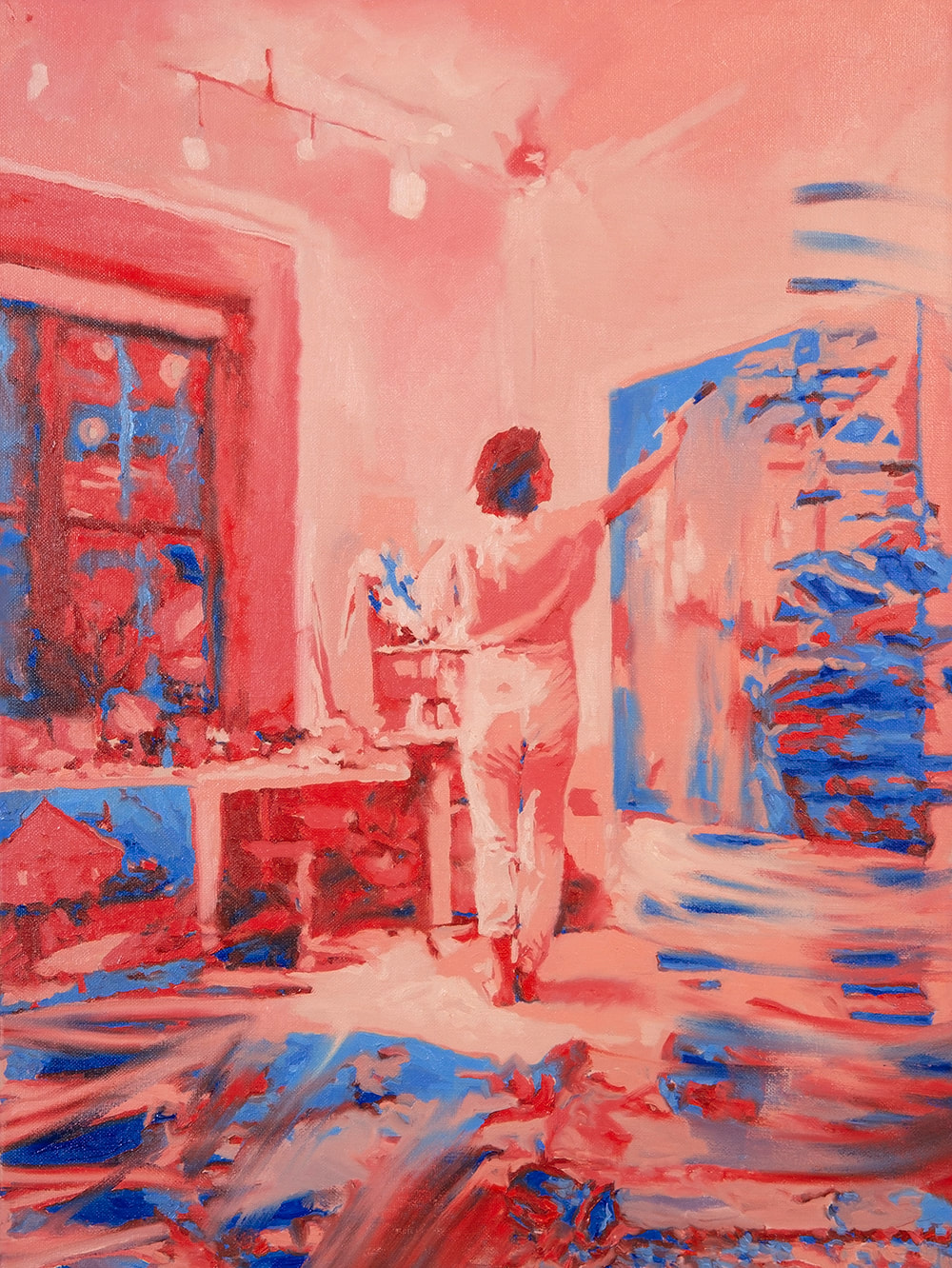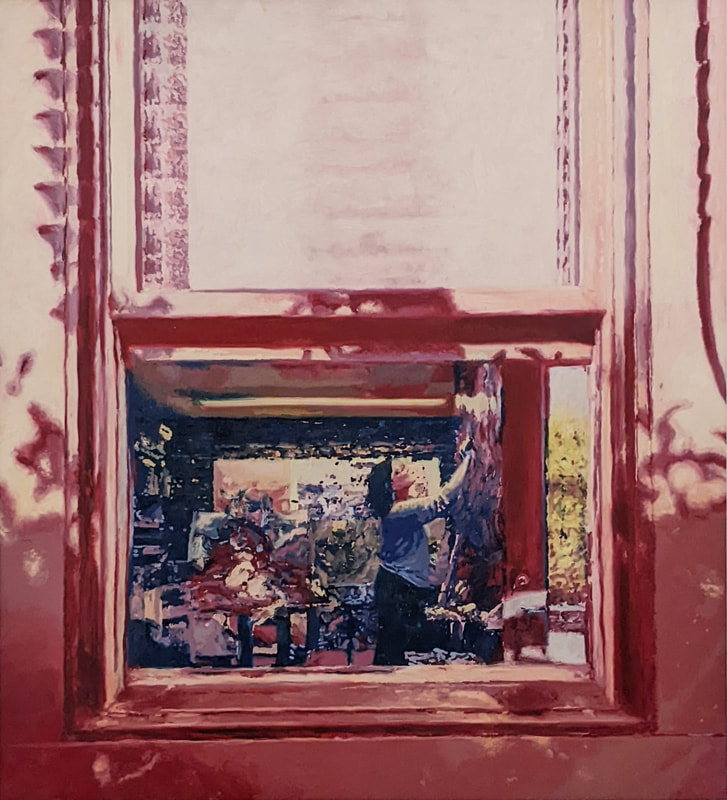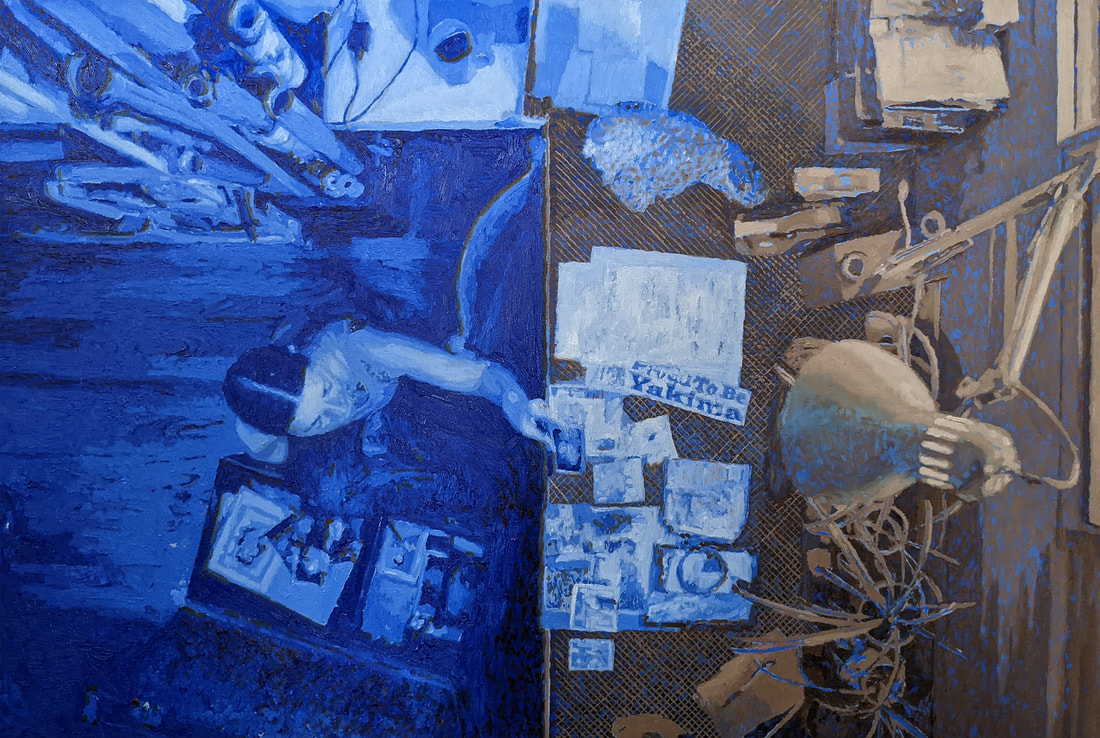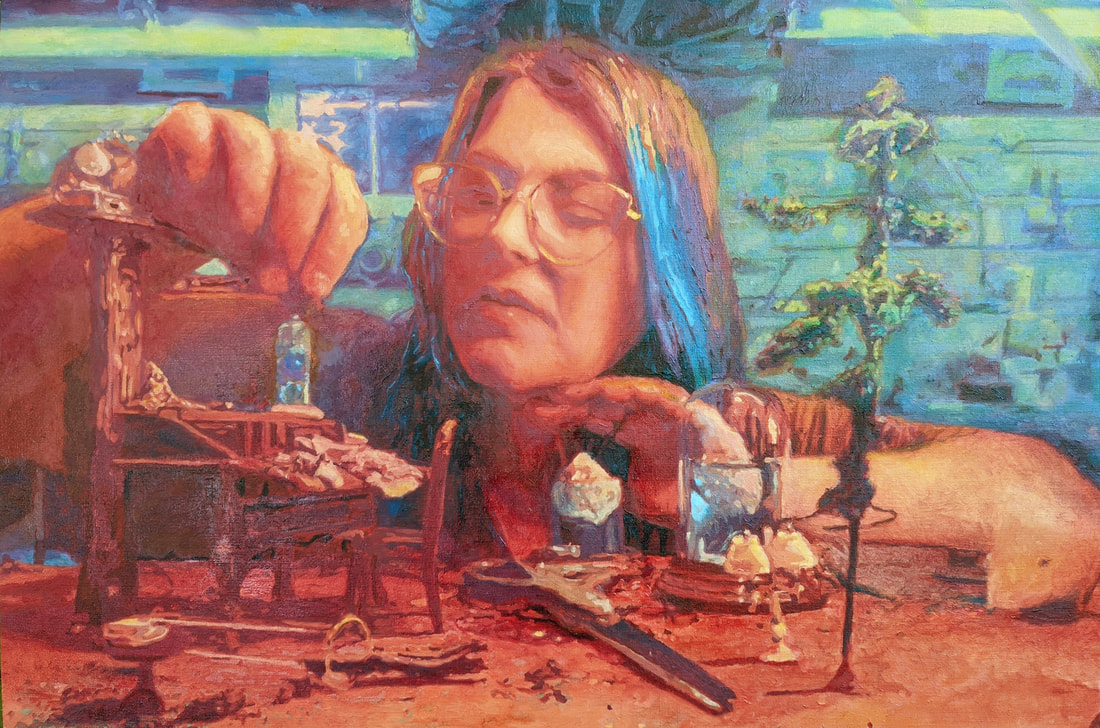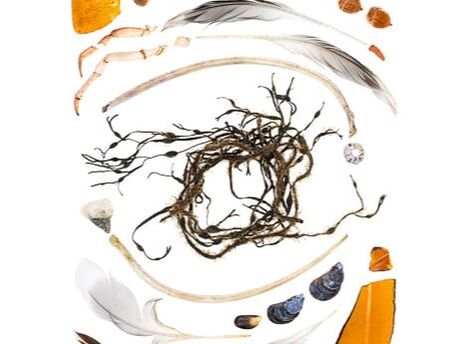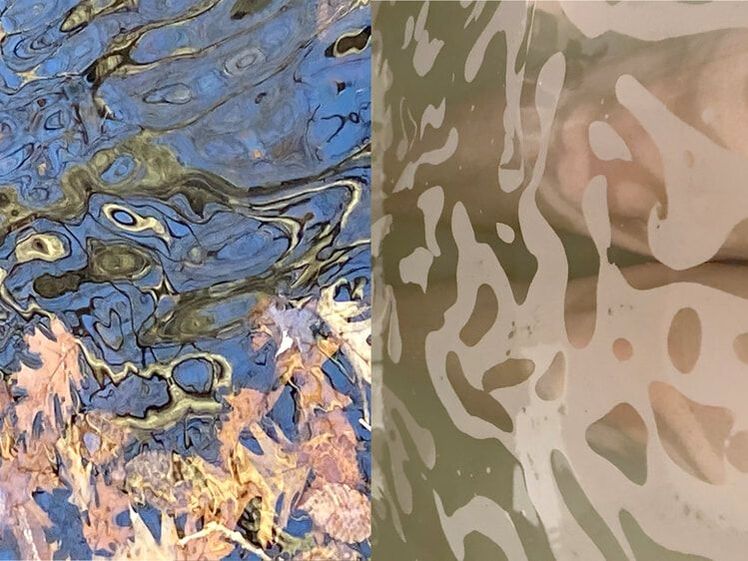|
This is the first woman I painted in the series. She is a metal artist and when other responsibilities take precedence, her work pauses. The light switch, in the hall outside her home studio, came to represent for me the social aspect of art-making and non-making: that innocuous interruptions, accumulated, become significant and that other people in our lives – as our enablers – are part of the affair.
|
|
Loreen Oren, @loreen.oren.art. This artist works out of a corner of her children’s playroom. I honor her carefully constructed life, with my tender application of paint. And then - with a swipe of it - I suggest some things could change. Belying her focused gaze, you can see her reflection in the window, from a distracted moment after her twins arrive home. I notice the colors of toys find their way into the paintings and wonder if “a room of one’s own” is too simple a prescription.
|
|
TAAS artist Laura Malone, @lauramaloneart. I met Laura in ArtLab and flew out to Oakland to visit. Painting her, the patterns of Laura’s work spilled into the environment around her. And then there was a moment of clarity when I realized that, for her, it’s the other way around. So that the viewer can share my experience getting to know Laura, I’ve placed the main area of interest on the canvas below eye level. The crick in your neck snooping doesn’t mean it’s an unwelcome visit, but I want my viewer to feel the voyeuristic joy an artist feels transgressing the privacy of another artist at work.
|
|
TAAS artist Epiphany Couch, @epiphany_couch_art. As I watched Epiphany unearth family photographs from a trunk in her Portland studio, I came to see how her practice - to understand her Yakama, Puyallup and Scandinavian lineages - manifests in everyday ways. The painting contrasts Epiphany, seated on the floor, with her western-style worktable. The stark hue shift in the painting between left and right tries to convey the tensions in process that Epiphany experiences in her work.
|
|
TAAS artist Danielle Schlunegger-Warner, @naturalistandco. I zoomed into Danielle’s Portland studio and we talked for a long time about the importance of tinkering. From creative chaos, Danielle assembles potent juxtapositions; worlds emerge that shed light on larger truths. The two fulcrum points in the painting are her hands: first, the one giving her comfort embodies Danielle’s inner voice; the other hand constructs. I intend for the viewer to consider the nested worlds of Danielle’s creation, the studio space she inhabits and the larger world through the window beyond.
|
Laura Winn Clark's Artist Statement:
You say, “Hello” and I say, “How are you?” You “confess” to a terrible morning and we feel better that we got past “pleasantries.” But we didn’t talk about what caused you to get up this morning, forego more lucrative work and more pleasurable leisure to MAKE something.
What do I do? I make paintings about this creative act: oil on linen in various sizes, calibrated to the in-person viewer whose relationship to the work confronts them with their complicity in the social order. I portray women artists – writers, visual artists, chefs and others – to reveal the unseen: the psychological realities, the social relationships and struggles that impact their work. The series is personal; it looks beyond preferred narratives to the messier ones that govern our lives and animate the work we make.
Laura Winn Clark's Project/Process Statement:
There was a moment I started saying, “I’m painting women artists in their spaces. Do you want to participate?” And the answer – delightfully – has been, “Yes.” Composing each painting, there’s reflection, introspection, oftentimes friendship. The viewer sees what they want to see. For some, it’s affiliation; for others, themes of social responsibility and mutuality; the blind, in my experience, see nothing but realism.
You say, “Hello” and I say, “How are you?” You “confess” to a terrible morning and we feel better that we got past “pleasantries.” But we didn’t talk about what caused you to get up this morning, forego more lucrative work and more pleasurable leisure to MAKE something.
What do I do? I make paintings about this creative act: oil on linen in various sizes, calibrated to the in-person viewer whose relationship to the work confronts them with their complicity in the social order. I portray women artists – writers, visual artists, chefs and others – to reveal the unseen: the psychological realities, the social relationships and struggles that impact their work. The series is personal; it looks beyond preferred narratives to the messier ones that govern our lives and animate the work we make.
Laura Winn Clark's Project/Process Statement:
There was a moment I started saying, “I’m painting women artists in their spaces. Do you want to participate?” And the answer – delightfully – has been, “Yes.” Composing each painting, there’s reflection, introspection, oftentimes friendship. The viewer sees what they want to see. For some, it’s affiliation; for others, themes of social responsibility and mutuality; the blind, in my experience, see nothing but realism.

